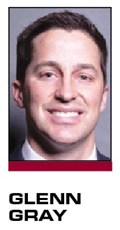How big is the
youth sports industry? What financial impact does it make on our nation’s economy each weekend? Sorry to say, but this collective data is not readily available, and that could be drastically hurting planners and community leaders hoping to host a first-time event.
At the moment, the youth sports industry lacks a central voice to push for deeper insights about the millions of children competing annually in baseball, basketball, football, hockey, lacrosse, soccer and other athletics. In recent years, sports analytic firms have become increasingly prominent in managing and dissecting big data. However, many sport-specific national organizations are too fragmented to gather information that accurately showcases the entire landscape.
Young athletes at the elite level are required to travel extensively to play in the best tournaments. As they get older, it’s even more important to participate in competitions where college coaches are present.
According to ScholarshipStats.com, the odds of a high school athlete playing at an NCAA Division I program are 99-1 for basketball, 47-1 for baseball, 41-1 for football and 73-1 to soccer. Increased visibility at tournaments with recruiters can bring this dream closer to reality.
While many argue the level of competition in youth sports and the focus on wins versus losses is detrimental to player development at the youngest ages, it’s hard to ignore the finances these events pump into communities coast to coast. In the United States, nearly 30 million youth athletes across 14,000 different organizations represent a collective annual revenue of about $9 billion, according to the National Center for Charitable Statistics. In late 2013, the Sports Facility Advisory concluded youth sports and related travel are “recession resistant.” The same study determined 27 percent of all trips taken that year were solely to attend an organized sporting event.
Let’s examine our national capital area, which enjoyed an economic benefit of about $7 billion for all tourism in 2015. It’s safe to surmise a good chunk spent by D.C. visitors was related to youth sports, including events at the Maryland SoccerPlex in Germantown, about 40 minutes north of Washington. The venue features 19 full-size natural grass soccer fields, three lighted artificial turf fields and a stadium that seats several thousand fans. It hosts about 650,000 visitors and up to 5,000 soccer matches each year. In 2014, Maryland SoccerPlex contributed $30 million regionally through 12 youth soccer tournaments.
A recent example comes from US Club Soccer, a prominent member of the U.S. Soccer Federation and the leading organization developing soccer clubs across America. Its 2016 National Premier League Finals and National Cup XV Finals during consecutive weekends last month at Aurora (Colo.) Sports Park generated an estimated economic impact of $4.2 million. With 280 teams equaling nearly 5,000 youth players, the number of total attendees quickly jumps to 20,000 by adding two parents and a sibling per participant. Just east of Denver, the 220-acre site with 23 soccer fields was ideal for a youth sports national championship of this magnitude.
A few months earlier, USA Hockey’s annual Presidents Day Tournament generated $1.5 million for Colorado’s capital area.
During these multiday events, hotels are typically booked several months in advance with few or any rooms available within a 30-mile radius of the host complex. Restaurants are packed daily with team meals, and retail shopping receives a residual effect from players’ families.
The National Association of Sports Commissions supports its 750 member organizations and 2,400 sports tourism professionals in developing and executing successful events, like those above, which meaningfully affect hospitality and other businesses.
NASC provides an economic impact calculator to its members and, in 2014 with George Washington University, it produced a sports tourism industry report that reported $8.96 billion in total visitor spending nationally (a 3 percent increase from 2013) and 25.65 million sports visitors in that year.
However, limited research has been conducted to further understand the economic impact of youth baseball, football, lacrosse, soccer and others.
If studies were conducted regularly for sizable youth tournaments, the data could be collected and segmented for event planners to leverage local government officials and businesses in supporting even more competitions. Generating publicity about estimated and actual monetary gains adds power to the punch.
With a unified approach, the youth sports industry can improve on telling its story about the significant financial implications thousands of events have on local, regional and national economies. The pressure needs to be on the national sports governing body versus the local sports commission or community leaders to make this information accessible for all to benefit.
Glenn Gray (ggray@buffalo.agency) is vice president of Buffalo.Agency, holds a U.S. Soccer Federation national “A” coaching license and is co-chair of Golf 20/20’s Millennial Task Force. Follow him on Twitter at
@glenncgray.




